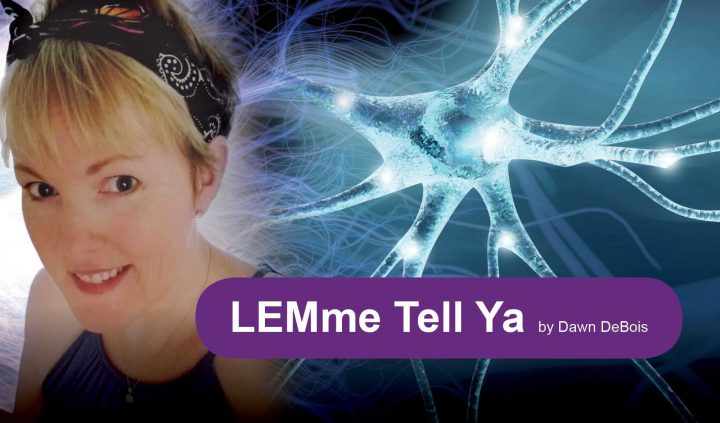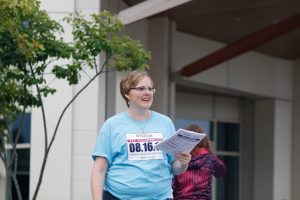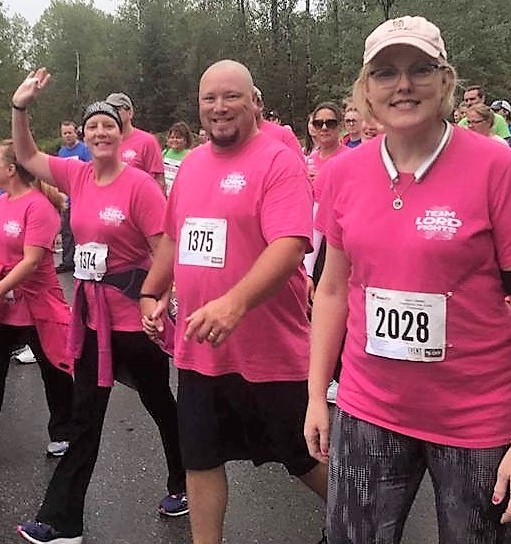I Had Many Vague Symptoms Before My LEMS Diagnosis

As a Lambert-Eaton myasthenic syndrome (LEMS) patient, you might not have identified with the experiences that I described in my previous column. However, I’m sure that most of you will relate to this one. LEMS symptoms are vague, and due to that factor, as well as the disease’s rarity — its prevalence is about 2.8 per million worldwide — it takes a very inquisitive neurologist to reach a diagnosis.
My severe scoliosis wasn’t my only symptom of LEMS as a child. I was a competitive swimmer. Every coach I had made comments like, “Dawn, it’s too bad that your legs aren’t nearly as strong as your arms and shoulders. If they were, you’d be unstoppable.”
It’s interesting to look at my diagnosis and realize that LEMS symptoms begin with weakness in the legs. I did everything my coaches suggested regarding leg workouts — including weights, kickboarding, and running — but I could not build leg muscles that mirrored my upper-body strength.
Another vague symptom of LEMS in my teenage years was my response to exertion. After double sessions for midwinter practice, I’d be bedbound for a week. My family described it as, “Dawn needs more sleep than most.” My response to exhaustion was pain. My entire body hurt, and it wasn’t like muscular aches after a workout, but rather deep, intense pain.
In my 30s and 40s, things started to fast-forward along the LEMS symptom trajectory. The Nike “Just Do It” campaign was in full swing at the time. Meanwhile, my body was at its worst. Every time I tried to get back into shape, my body would react like a rubber band and snap back painfully and forcefully, and I’d be sick for weeks on end.
I recall struggling to walk a mile. I had constant pain in my legs and feet. I remember a teary phone call with a dear friend, whom I wanted to join in a 5K. I couldn’t understand why I didn’t feel pain in my muscles when I exerted myself, but instead had debilitating bone pain for days afterward. I didn’t think to see a doctor and ask why I couldn’t exercise. I believed that I was a failure.

Unable to participate in the 5K event, Dawn serves as a volunteer greeter at the 2014 EMMC Champion the Cure Challenge, before she was diagnosed. (Courtesy of Champion the Cure Challenge)
I was divorced and raising my sons alone, so I didn’t have another adult at home to observe my struggles and say, “Dawn, this isn’t normal.” When I handed a jar to my sons and asked them to open it for me, they would reply, “Mom, why are you so weak?” I’d laugh and be proud of how strong my sons were instead of questioning my lack of strength.
During the year leading up to my LEMS diagnosis in 2016, my symptoms went from vague to severe.
That summer, I bought a beach chair and tried it out on my deck. The chair was low, about 4 inches off the ground. I’m grateful that I didn’t try it out on a beach because I wouldn’t have been able to get up again without help. I had to crawl to the side of the deck to pull myself up.
My scariest symptom was my inability to swallow. I had dealt with unexplained hoarseness during the years when I did a lot of public speaking for my career as a public health educator. I had brushed off that vague symptom, and nobody had pushed me to have it investigated.
However, when my swallowing became compromised, I couldn’t ignore it any longer. Food would sit in my esophagus after swallowing. Though it was alarming, somehow I’ve learned not to panic during stressful situations, and the food would eventually move along.
The human body is built around muscles that connect to allow movement. When these connections are disrupted, as they are in LEMS and other myasthenic diseases, the cascade effect is more significant than you can imagine, unless you have lived in that body.
The summer following my LEMS diagnosis, after I had started treatment, I participated in my first 5K, captaining “Team Lord” for my friend Amy, who was battling breast cancer. Diagnosis is key. Afterward, it is possible to enjoy living again, even with LEMS.
***
Note: Lambert-Eaton News is strictly a news and information website about the disease. It does not provide medical advice, diagnosis, or treatment. This content is not intended to be a substitute for professional medical advice, diagnosis, or treatment. Always seek the advice of your physician or another qualified health provider with any questions you may have regarding a medical condition. Never disregard professional medical advice or delay in seeking it because of something you have read on this website.








Leave a comment
Fill in the required fields to post. Your email address will not be published.